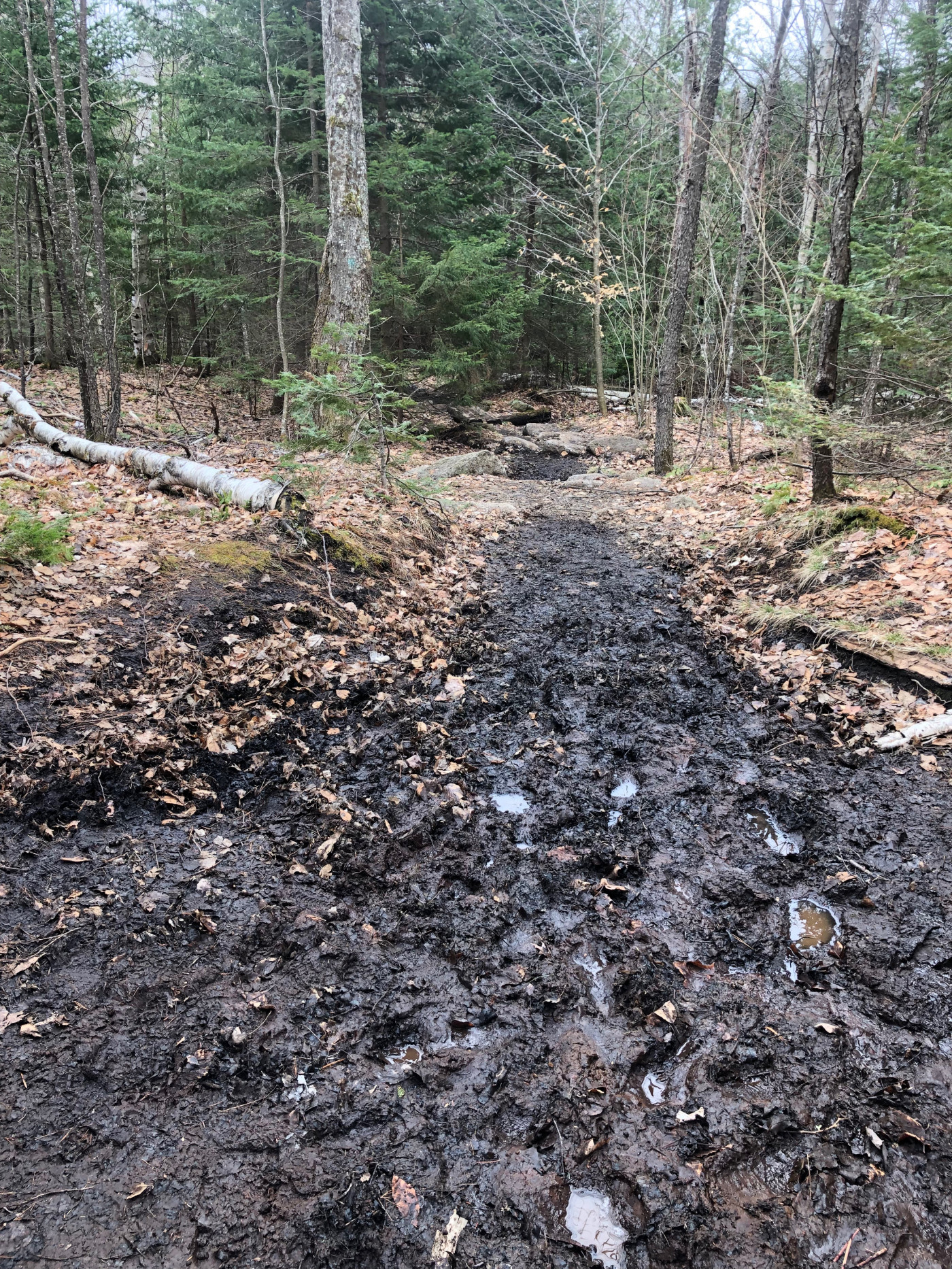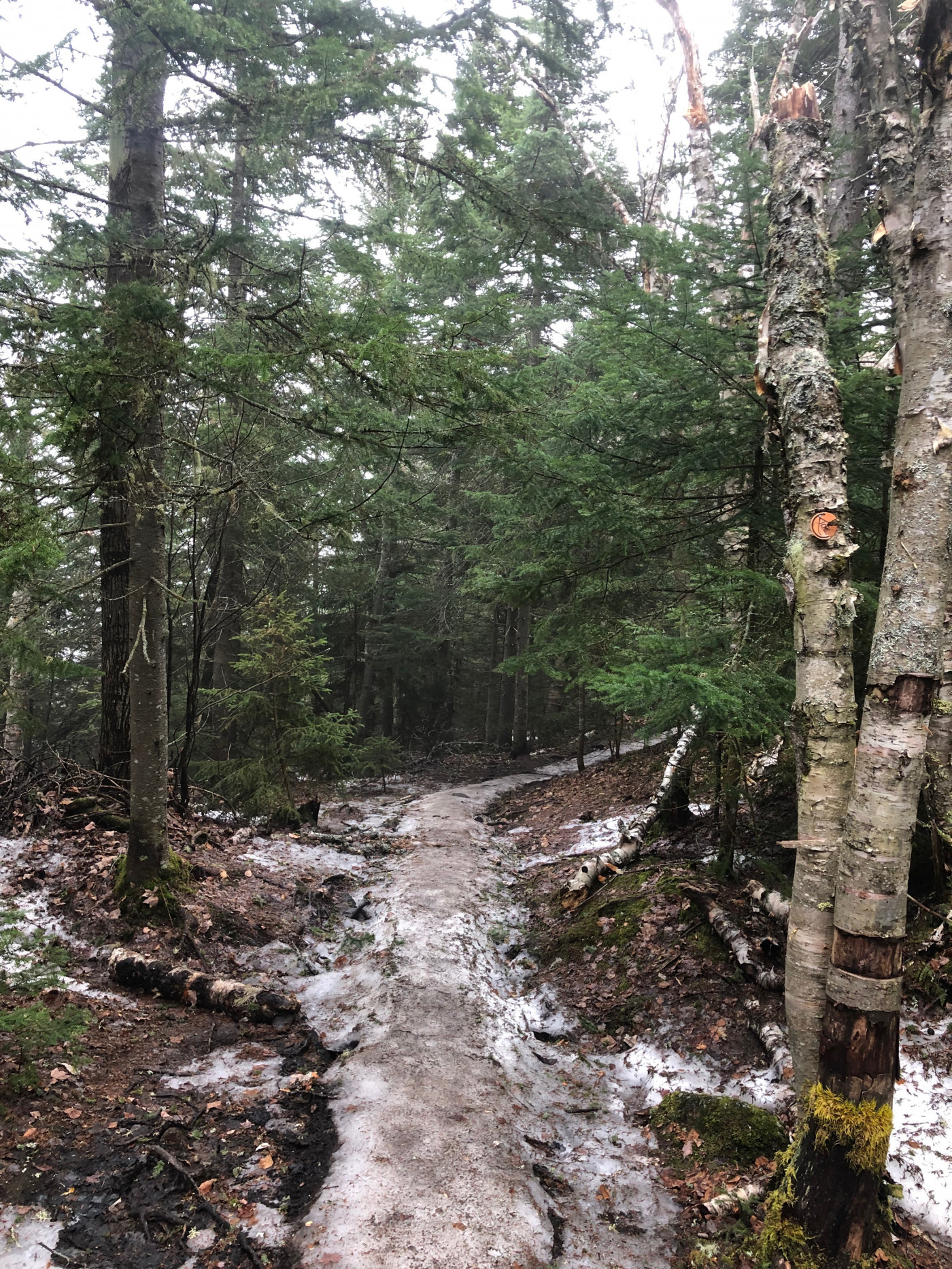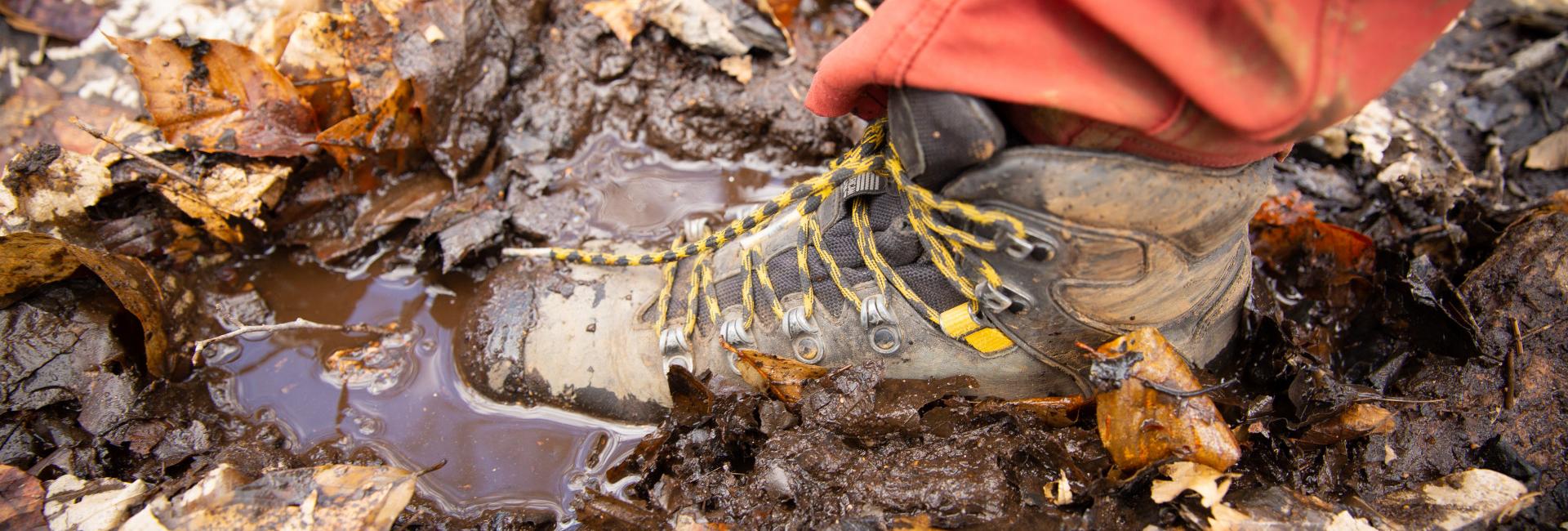Submitted by guest blogger, Erin Hanczyk
If you grew up hearing the phrase “a little dirt never hurt,” then you’re already one step ahead because it also applies to what your hiking mentality should be in the spring. Spring conditions in the Adirondacks cover just about every kind of trail condition you can think of, all packed into one hike. With the diverse and always changing conditions of the season, the trails and surrounding lands become much more susceptible to damage and erosion. Vegetation along the trails is regenerating while habitats are thriving in the fresh greens and soft dirt. All of this can be easily wiped away with one step of a boot. Avoiding trails above 2,500 feet during the spring is not only for your safety, it’s also to protect your lands. Here are some tips on how to protect the trails, vegetation, and habitats this spring.
1. Embrace the dirt

When it comes to muddy sections of any trail, walk right through the mud, down the center of the trail, no matter how deep, squishy, or wet that muddy section is. Stick to rocks, boulders, or man-made bridging if available. This will give the surrounding land and vegetation its best chance at surviving.
Why do you constantly hear “walk through the mud, not around it?” You see, the center of the trail sees the heaviest use. It has already faced years and years of foot traffic, and the consistent flow of hikers renders the trail non-viable for new vegetation growth. When hikers begin to wander off the center of the trail to avoid mud, this damages any potentially healthy and growing landscapes. The trail now begins to spread outward as the damage creeps from side to side, creating a wider trail that’s even more susceptible to erosion. This process is even more extreme during mud season, when soil is soft and vegetation is fragile. This leads to tip #2!
2. Be prepared to embrace the dirt

This is where hikers fail to prioritize protecting the land over their own comfort. If you are not prepared to hike through the mud because of your footwear and choice or clothing, you will find yourself easily choosing comfort and walking around the muddy sections so you can accomplish the hike you set out for. In the spring, you should always wear footwear and clothing that you’re OK with getting muddy. Waterproof boots, gaiters, and hiking pants are your best option for staying dry through the mud. Muddy sections vary from hardened mud to ankle deep sink holes to standing water. Be prepared with the proper gear so protecting your lands can always be a priority.
3. Avoid hiking above 2,500 feet

The New York State Department of Environmental Conservation (DEC) releases a muddy trail advisory every spring asking hikers to stay off of high elevation trails to best protect the land. This is because at higher elevations the soil and vegetation are even more fragile and erosive due to the sloping nature of the land. Hikers aren’t just stepping flat through the mud, they are slipping and sliding up the slopes, which can completely tear up trail surfaces and put you, as a hiker, at risk. Higher elevations also see the last of the snowmelt, so while lower elevations have been drying out for a while, the higher elevations are at their wettest and muddiest and just starting to regenerate vegetation.
There are so many amazing trails to choose from in the Adirondacks, avoiding high peaks and trails above 2,500 feet is easy to accomplish, especially when the livelihood of our mountains depends on it. One of the best ways to ensure you are avoiding trails above this elevation is to research trails ahead of time! Note the elevation, and if it’s higher than the 2,500-foot mark, save it for another time.
To find a hike that’s best for you and your family during mud season, check out this list of Adirondack Hikes Under 2,500 feet and remember to always practice Leave No Trace!

